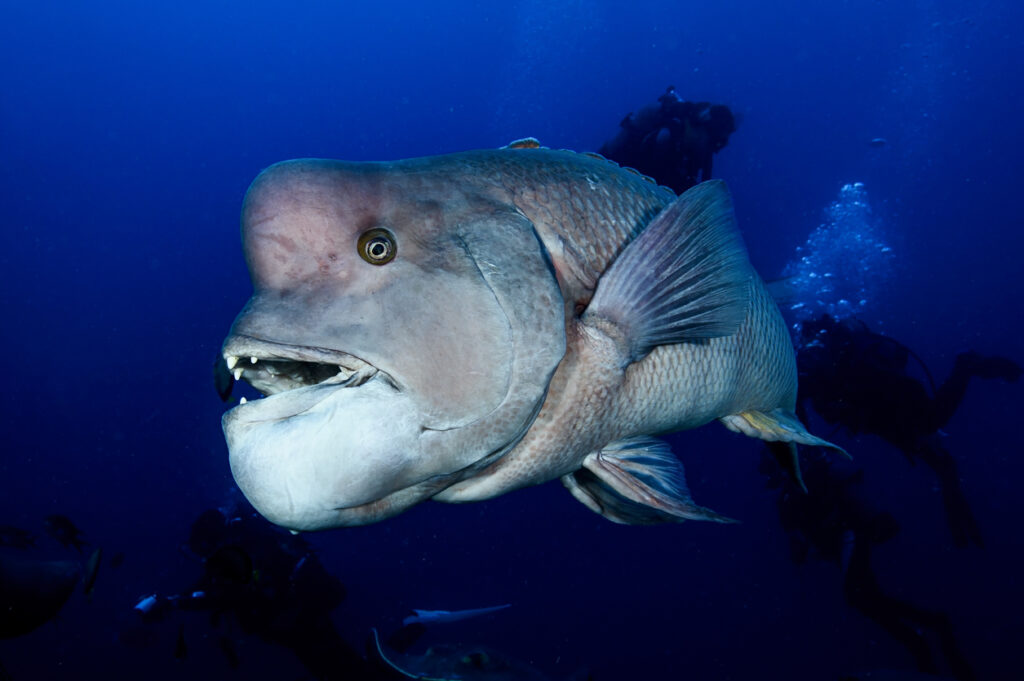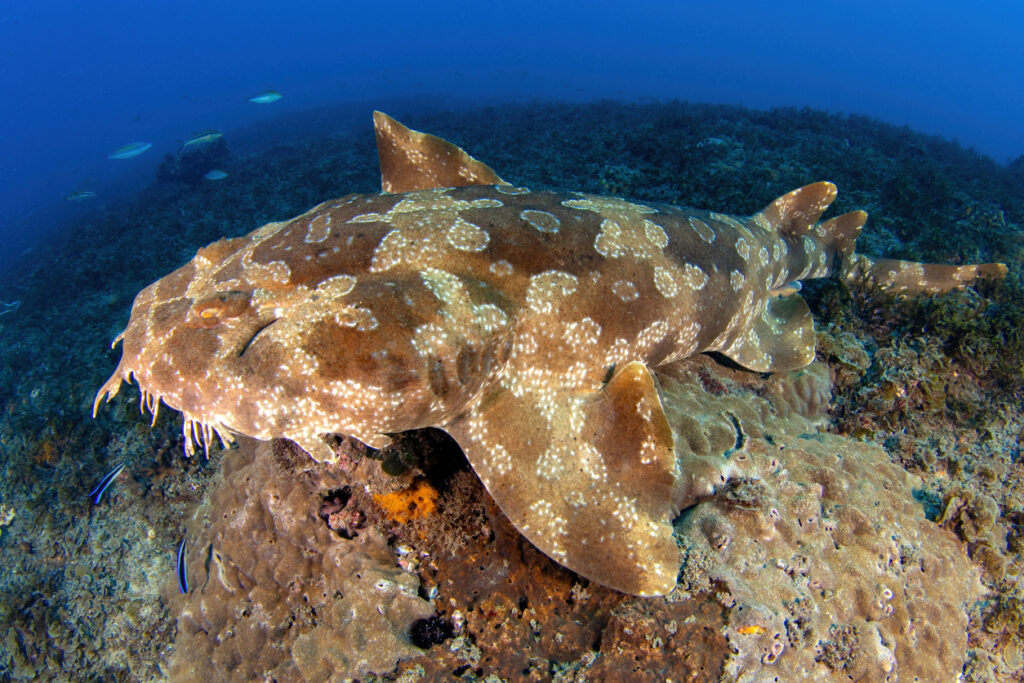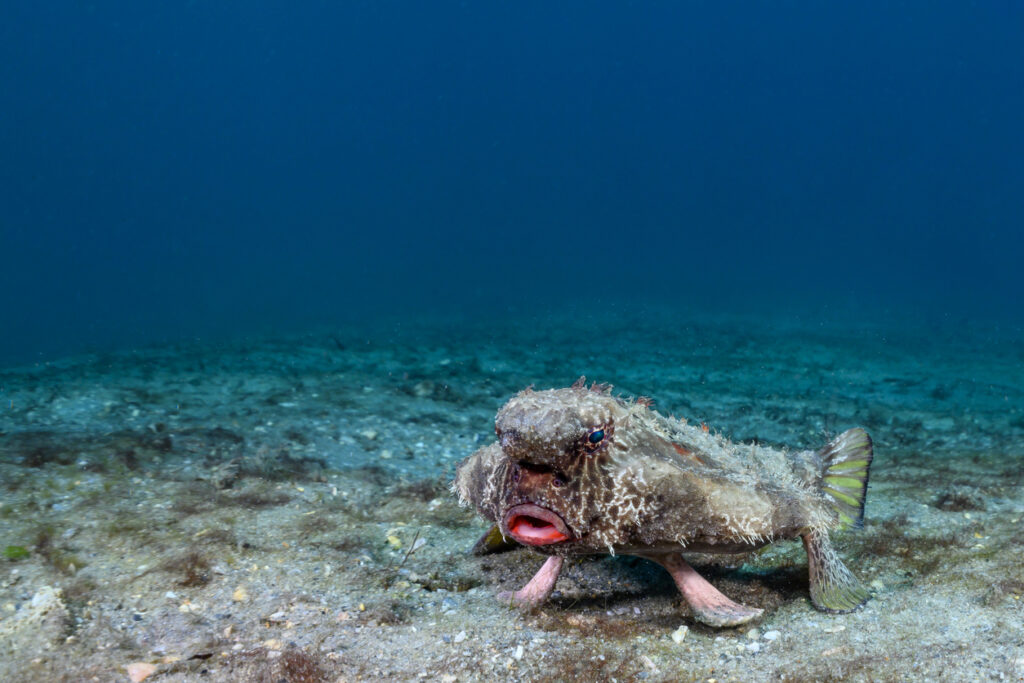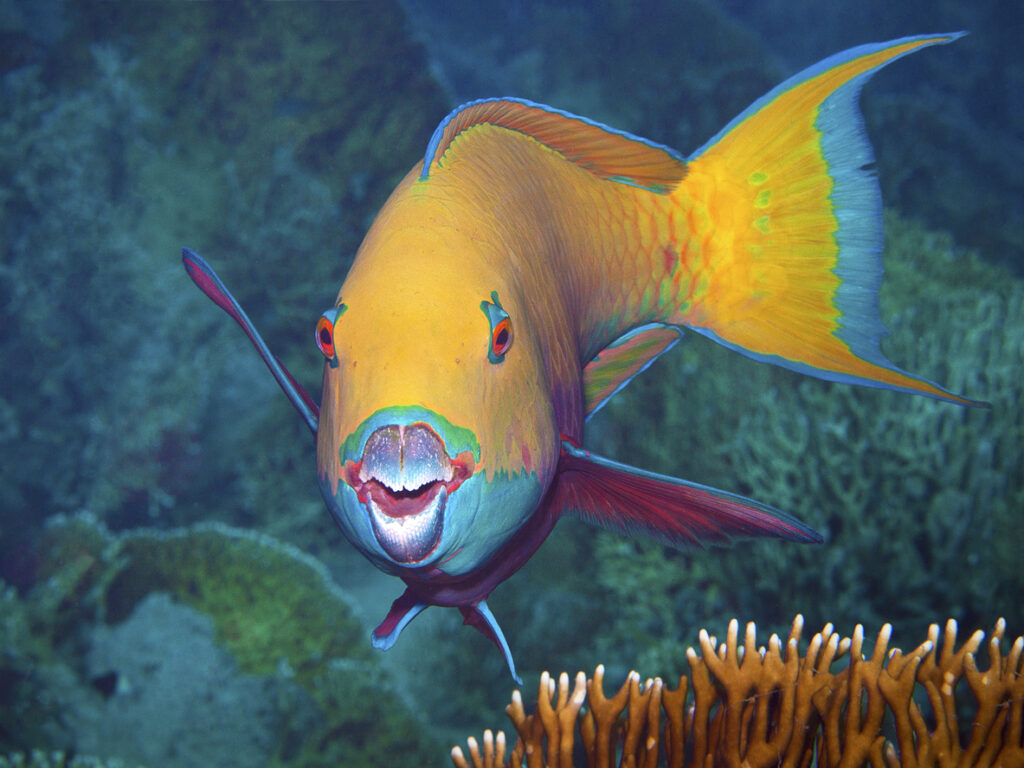The world’s oceans are home to some incredible-looking creatures with exciting, but unusual adaptations that fit with their habitats and diets. And yet, when we think of the deep, we tend to only think of the most well-known marine mammals and fish like seals, dolphins, clownfish and whales – species that are known for their charming personalities and cuteness. But among the countless species found in the world’s waters, you’re bound to discover more than a handful of fish that stand out. In fact, some of them are so strange and unusual, it can be hard to believe they actually exist!
Either way, here are ten of the funniest-looking and weirdest fish found swimming in our oceans.
1. Leafy sea dragon (Phycodurus eques)
Well, when we said stand out, we weren’t entirely being truthful. This sneaky individual’s speciality is actually disguising itself, using its bizarre leaf-like protrusions to look more like a piece of seaweed than any other fish we’ve seen. But even though the leafy structures look like fins, the leafy sea dragon uses thin, almost transparent fins to get around.
Part of the same family that the seahorse belongs to, the leafy sea dragon’s plant-y appearance lets it sneak up on unsuspecting prey while cleverly hiding away from any predators looking to turn it into a meal. It’s also on record as David Attenborough’s favourite animal, and he’s seen plenty of those in his time!
2. Asian sheepshead wrasse (Semicossyphus reticulatus)

One fish that without a doubt stands out against the crowd is the Asian sheepshead wrasse with its two distinctive bulbous head protrusions – one on the chin and another on the forehead. These unusual protrusions are something that sprout as the fish begins to mature and grow in size. In fact, the Asian sheepshead wrasse is one of the largest species of wrasse, and some can grow as big as 100cm in length.
The weird-looking fish also develops unique pink and grey colourings, which start off as yellows and oranges in youngsters.
3. Blobfish (Psychrolutes marcidus)
Officially named as the world’s ugliest animal in 2013, the blobfish is a pale pink, blob-shaped fish with a drooping mouth and sagging nose. But this flabby physiology is only a consequence of the fish being pulled from the deep sea and suffering rapid de-pressurisation.
So, while we’ve only really seen their more unusual form, they’re thought to look much more like typical fish in their regular habitats. This is because the intense water pressure at these depths helps the blobfish hold its form.
4. Wobbegong (Orectolobidae)

Found in the western Pacific Ocean and Indian Ocean, the wobbegong is a species of the carpet shark family, and it’s easy to see why. Compared to what you would typically think of when you hear the word ‘shark’, these weird-looking creatures more closely resemble a large rug and can spread themselves out on the ocean floor, camouflaged by their flat, tasselled bodies. From this position, they wait for potential prey such as fish, lobsters, octopuses and crabs to pass by.
Its name is thought to come from an Australian Aborigine language meaning ‘shaggy beard’ – which makes a lot of sense.
5. Barreleye (Opisthoproctidae)
Also known as ‘spook fish’, the barreleye is often said to have alien-like features that make it unique. The fish appears see-through because of its dark grey or black colourings blending into the darkness around them. Its transparent dome-shaped forehead also doubles as a protective barrier for its sensitive eyes while making it even easier to camouflage in the surroundings.
Live in the twilight zone of the ocean which is more than 2000ft below sea level. Down here, the sunlight is non-existent and the creatures dwelling in this part of the ocean have had to adapt. The glowing green eyes of the barreleye fish are just one of these adaptations, and these let the fish see better and hunt down zooplankton to eat.
6. Red-lipped batfish (Ogcocephalus darwini)

Found on the ocean floor, this weird-looking creature seems ready for a night on the town with its bright red lips which is thought to be an adaptation that helps them attract mates or identify themselves. Adapted over time to walk and stand on its modified pectoral and pelvic fins, it also has its own built-in fishing rod snout with a retractable appendage it can use to lure prey close to its mouth. Pucker up!
7. Vampire squid (Vampyroteuthis infernalis)
Despite its name, the vampire squid isn’t a squid, or even an octopus for that matter. It’s also not a vampire, for reasons which should be pretty obvious. In fact, they’re pretty placid despite their scary-sounding name.
A completely distinct animal from a squid, even though it too has eight arms and two tentacles, the vampire squid is so-called because of the skin between its arms, which resembles a cape. Oh, and it likes to live in the waters of the Mesopelagic zone, an area of the ocean so dark and ominous that even Dracula himself would be afraid. Living in this habitat, the vampire squid has needed to develop a few tactics to help it avoid being attacked. When threatened, these unusual creatures can turn themselves inside out and strike what’s called the ‘pineapple pose’ in which its spikes are put on display.
8. Parrotfish (Scaridae)

The 80 different species of parrotfish, coming in a variety of vivid hues and shades, are so named not for their resemblance to a parrot’s brightly coloured feathers, but rather for the fused teeth at the front of their mouths, which seem to look more like a beak when compared to the usual mouth of a fish.
Not only does this fish look unusually bird-like, but it can also change colour, shape and even gender throughout its lifetime!
9. Sea toad (Chaunacidae)
This one is the new kid on the block in terms of the world’s strangest fish, with it only being discovered in 2024. It has modified fins which help it move efficiently across the seafloor, essentially making it a walking fish with legs. The unusual appearance of the sea toad includes googly eyes and vibrant red skin covered in tiny needles, likely to protect it against predators.
10. Peacock mantis shrimp (Odontodactylus scyllarus)
The peacock mantis shrimp, so-called because of its colourful body has developed a unique method of killing and breaking apart prey such as fish and hard-shelled invertebrates. In fact, its punch is known to be one of the fastest movements of any animal in the world.
Their weird and colourful appearances are also thought to be even more vibrant through their complex eyes that can see a much wider kaleidoscope of colour wavelengths than many mammals.
We hope you’ve enjoyed reading all about the most unusual and weird-looking fish in our oceans! Looking to see some of the most amazing creatures of the deep for yourself? To purchase tickets for Blue Reef Aquarium Portsmouth, book online here.
